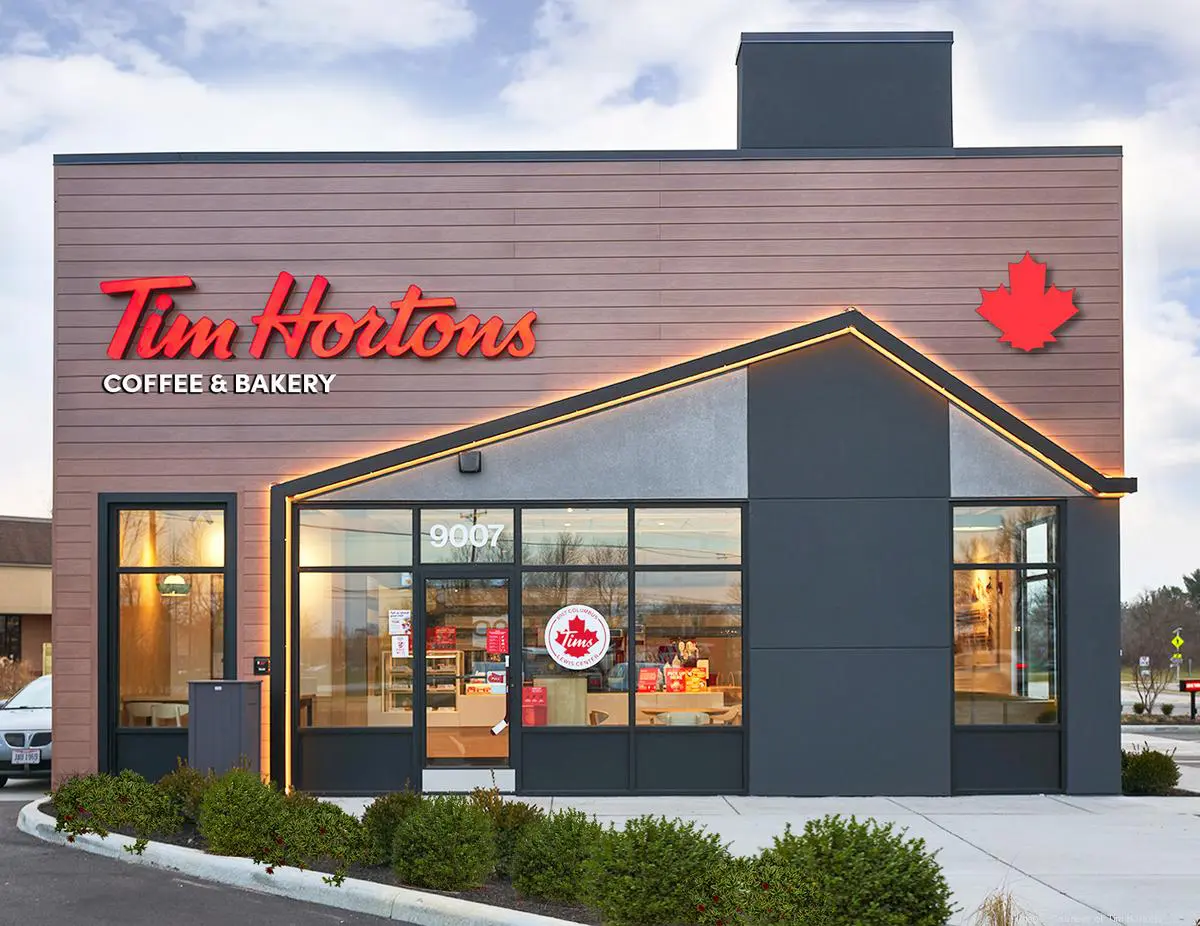How Much Does It Cost to Start a Tim Hortons Franchise in Canada?
By Sara Adnan | Published on 30 Sep 2022

Now the most beloved fast food chain in Canada, Tim Hortons opened its first restaurant on May 17, 1964. Despite operating and franchising 5291 restaurants worldwide, the restaurant holds a unique value for Canadians. In 2021, Tim Hortons made over 8.2 billion Canadian dollars in gross sales in Canada, leaving behind all other restaurant chains including McDonald which came in second place with 6 billion Canadian dollars in gross sales.
Although Tim Hortons has expanded worldwide, the majority of its restaurants are located in Canada. With 80% of Canadians visiting Tims in Canada at least once a month, the restaurant serves more than 5 million cups of coffee every day.
During the financial year 2021, an average Tim Hortons franchise generated $1,054,296 USD in gross sales. The overall revenue generated in 2021, saw an increase compared to the previous year. You too can become a part of the largest restaurant chain in Canada with a brand value of $4.5 billion, by becoming a Tim Hortons franchisee. Following is a breakdown of a Tim Hortons franchise cost in Canada.
[Offer productType=“CreditCard” api_id=“64dd008b7271d033a068311b”]Tim Hortons franchise cost
How much starting a Tom Hortons franchise in Canada will cost you can vary based on factors like the location and infrastructure. Building a new restaurant will cost a lot more than renovating and repurposing an existing building. Following is a breakdown of Tim Hortons franchise costs in Canada so that you can have a better idea of what you are getting into.
Minimum financial requirement
First things first, to be accepted as a suitable candidate for franchising, you must have a net worth of $500,000 CAN. Moreover, you must also have $100,000 CAN. in unencumbered funds. That usually means liquid cash to invest that has lien on it. If you don’t meet these two requirements, you are not eligible to apply to be a franchisee.
Tim Hortons franchise fee
If you meet the minimum financial requirement and have completed the approval process, you are eligible to get a license to run operations under the brand’s name. However, to obtain that license and start operations, you must pay a non-refundable franchise fee. The franchise fee can vary depending on the type of shop you are going to set up.
A standard Tim Hortons shop means a restaurant with a standalone building, a drive-thru, dedicated restrooms, dedicated staff, and dedicated interior seating. A non-standard Tim Hortons shop however means a kiosk or a cart installed within another venue such as a mall, a gas station or a convenience store. In a non-standard shop, the seating is not dedicated, but dedicated staff is still a requirement.
The minimum is $25,000 (applies to non-standard shops), and the maximum is $50,000 USD (applies to standard shops). The time period for paying this fee is within 10 business days of signing the franchisee agreement and before opening the shop.
Insurance cost
Next comes insurance costs. The cost of insurance can vary depending on the details of your insurance plan, the coverage provided by insurance, and the company offering the insurance. To give you an estimate, the cost of insurance can range from $2,500 to $21,500.
Set-up cost of your franchise
You can choose to set up a traditional Tim Hortons restaurant, with a drive-through and seating for customers, or you can go for a non-standard shop in the form of a built-in kiosk or a full-service cart. The minimum you will need to invest in building, insuring, and staffing a standard shop is about $1,044,000 USD. The cost can go up to $1,441,500 USD.
That doesn’t include any professional fees on your side, like a lawyer, accountant, or other service. It also doesn’t include the cost of buying real estate.
However, if you go for a non-standard option, you can set up shop within the range of $94,000 USD to $270,000 USD.The equipment that you need to get the operations running and that is required to be set up within 30 days of the invoice data can cost you up to $450,000.
If you don’t own any real estate or if you do not have the money to buy the land, you can lease land or both land and building from Tim Hortons on a triple net basis. This lease will save you from making a large upfront payment that would have gone into the buying of the property and allow you to start running your restaurant right away.
The lease varies from 7% to 8.5% of gross sales for a standard shop, and 13% of gross sales for a non-standard shop/kiosk. Under the triple net lease agreement, you will also be responsible for paying property tax, insurance, and maintenance charges.
Training cost
The next step in setting up the restaurant and the equipment is to hire staff. Hiring the right staff and training them will cost you time, energy, and money. The hiring and training costs can range from $6,000 to $27,000.
Royalty and advertising fee
Tim Hortons charges a royalty fee equivalent to 4.5% to 6% of gross sales. The fee is due weekly.
Moreover, as a Tim Hortons franchisee, you must contribute to Tim Horton’s advertising budget. You pay a 4% advertising fee on all gross sales every month.
Apart from these ongoing fees, some money will also go into maintenance and you might even have to invest in repairs if need be. All these extra charges can amount from $15,000 to $2,500.
What will you earn as a Tim Hortons franchise owner?
The factors affecting how much you earn in a year include the location of your shop, customer satisfaction, and your ability to maintain quality standards. An average Tim Hortons franchise made $87,858 USD in monthly gross sales, in the year 2021.
The take home salary you get as a Tim Hortons franchise owner can range from $40,480 per year to $107,660. The amount you make as a franchise owner depends on your ability to generate profit.
Owners with franchises at successfully established locations make more than those with newly started restaurants, but you can accelerate your growth by providing the right customer service, maintaining quality, and employing the right business strategies.
What is the return on investment?
Knowing all the numbers will do you no good until you truly understand what those numbers mean. The fact that Tim Hortons has a brand value of 4.5 billion dollars, is rapidly growing, and makes a lot of sales, doesn’t necessarily mean that becoming a Tim Hortons franchisee will set you up for success.
Though the figures sound promising, it is best to have an estimate of the return on investment you are likely to get and how long will it take for you to recoup the initial investment.
Both of these things can vary depending on factors like the location of the restaurant, the insurance fee, the type of shop your set up, whether you are buying the property or getting it on lease etc. To get a more specific idea about whether or not becoming a franchisee is worthwhile, you can calculate the return on investment (ROI) by entering more precise figures.
Becoming a Tim Hortons franchise owner
To apply to be a franchisee, you will have to prove a net worth of $500,000 and show that you have at least $100,000 worth of available funds. If you think you can do that, the first step is to fill out a pre-qualification questionnaire which you can find on the “Franchising” page of the Tim Hortons website.
Following the filling of the questionnaire, you will send an email prompting you to opt-in for the position of the franchisee, after which you will get a discovery call from the company. Tim Hortons will then do some background screening and ask you to sign a non-disclosure agreement (NDA).
Following the NDA, you will have to present a business case to Tim Hortons’ operations representatives and if it is approved, they will ask you to spend two experience days at a Tim Hortons restaurant.
Experience days are followed by interviews with senior leadership of Tim Hortons. If you are selected, you are given three to five weeks of Tim Horton’s training before you open the restaurant.
The final process is to get the license to operate under the brand name of Tim Hortons, which you can get by paying a non-refundable fee to Tim Hortons.
